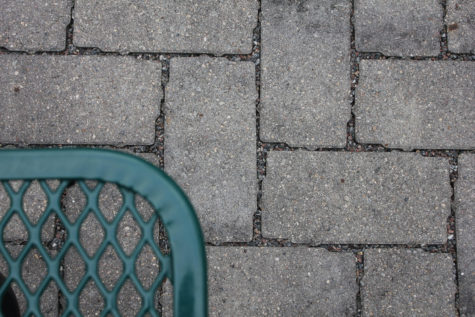Ten Steps Toward Sustainability
April 13, 2012
Ames community members gathered at Reiman Gardens yesterday not for a tour of the garden’s flowers and Lego sculptures, but to learn about sustainability.
“It’s different for everyone and it’s important that everyone find those things that are going to work in their budget. Not everybody can go buy a Prius, not everyone can put up solar panels or a wind turbine but everyone can find something to do to make a huge difference,” said Merry Rankin, Director of Sustainability.
In fact, there’s multiple and affordable steps toward becoming more sustainable. Rankin suggested the following ten:
1. Use a refillable water bottle and coffee mug.
Bottled water is energy intensive to produce, transport, and refrigerate. The amount of petroleum it takes to produce one disposable plastic bottle is 1/3 the equivalent of water filled in the bottle.
For frequent coffee drinkers, ISU Dining and cafes in the Ames area, including Cafe Diem, encourage students to bring their mugs by giving discounts.
2. Use compact fluorescent lights (CFL) or light emitting diodes (LED) instead of incandescent light bulbs.
CFL’s use 50 percent less energy than incandescent lights, and last ten time longer.
LED’s will last up to 50,000 hours and can last ten times longer than CFL’s.
3. Bring reusable bags when shopping.
This includes backpacks, book bags, etc. To make the average 100 billion plastic bags that Americans consume, requires up to 12 billion barrels of oil.
So if the purchase is light, avoid the bag. No reusable bags handy? Try reusing the plastic bags.
Biodegradable bags can be used for garbage, kitchen waste, pet waste, and it’s another effort to cut down on plastic waste.
4. Turn down the thermostat when no one is at home.
Try using a fan or a blanket before adjusting the thermostat. Investing in a programmable thermostat can help keep track of current temperatures.
5. Turning off appliances when not in use.
Or at least put them to sleep when not in use. Many electronics including gaming consoles, have a low power mode that can be enabled manually. Save some watts and dollars by using a kill-a-watt monitor to see how much electricity is needed for each appliance.
6. Reduce water consumption.
From the kitchen, to the bathroom, to the lawn, there are several methods cut down on water use including:
Use the dishwasher only when there’s a full load of dishes, save up to 4 gallons of water by cutting down your shower a minute, fix any leaky faucet or toilet, and use a broom to clean driveways and sidewalks instead of hosing it down.
7. Unplug unused appliances to avoid phantom energy.
Even if an appliance is shut off, if it’s still plugged in, it’s using energy. Using power strips can save up to 40 watts per day and $14 from the utilities bill per year.
8. Walk, bike or use public transportation.
For times when neither of the three above can be done, carpool. Next time the car needs a wash, car washes are an efficient method, preventing any harmful run-off.
9. Purchasing local, organic, biodegradable products.
Not everything on the list has to be certified organic, but try to look for products with less packaging and are made locally.
Shopping from secondhand stores is affordable and ensures products have a second life.
10. Remember the four R’s. Reduce, Reuse, Recycle, and Rethink.
Be creative. Find new ways to practice the four R’s. Rankin suggested ideas like using a stapleless stapler and using old rags or left over fabric for napkins.









